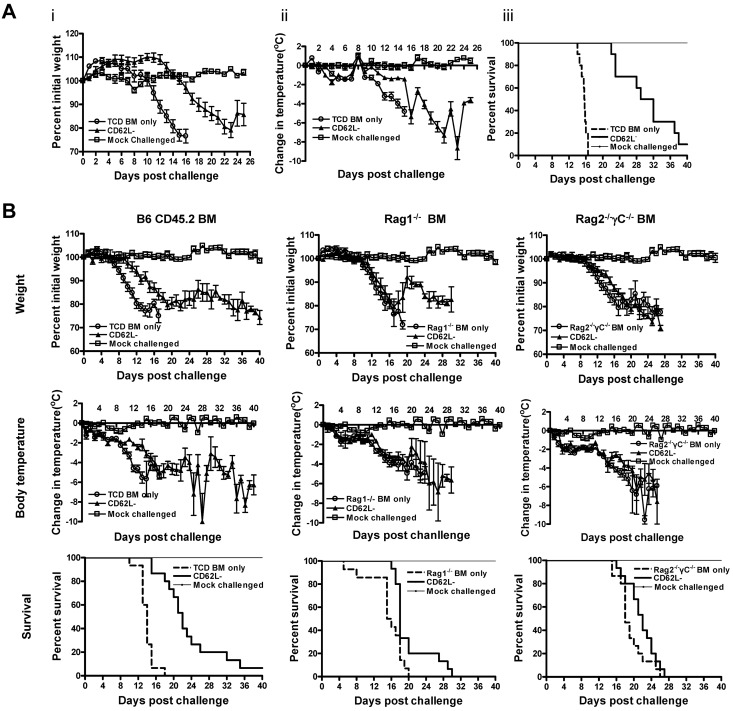Figure 2.
CD62L− T cells enhance the ability of TCD BM recipients to counteract the effects of viral infection in vivo. Bone marrow cells (1 × 107) from different sources and CD62L− T cells (1 × 106) from unprimed B6 CD45.1 mice were transplanted into lethally irradiated BALB/c recipients. The recipient mice were challenged with influenza virus at day 7 after transplantation. Body weight and body temperature were monitored daily in all recipients. Each group contained 10 (A) or 15 (B) mice. A group of normal BALB/c mice (n = 5) was included as mock-challenged control for each experiment. (A) TCD BM was from B6 CD45.2 mice. CD62L− versus TCD BM only (P < .0001); TCD BM only versus mock-challenged (P < .001). (B) Bone marrow used included TCD BM cells from B6 CD45.2 mice or whole marrow from Rag1−/− B6 or Rag2−/−γC−/− B6 mice. For survival, BM only versus their corresponding CD62L− groups except for Rag2−/−γC−/− (P < .01); TCD BM only verus Rag1−/− BM only or Rag2−/−γC−/− BM only (P < .01); P = NS in all other comparisons.

